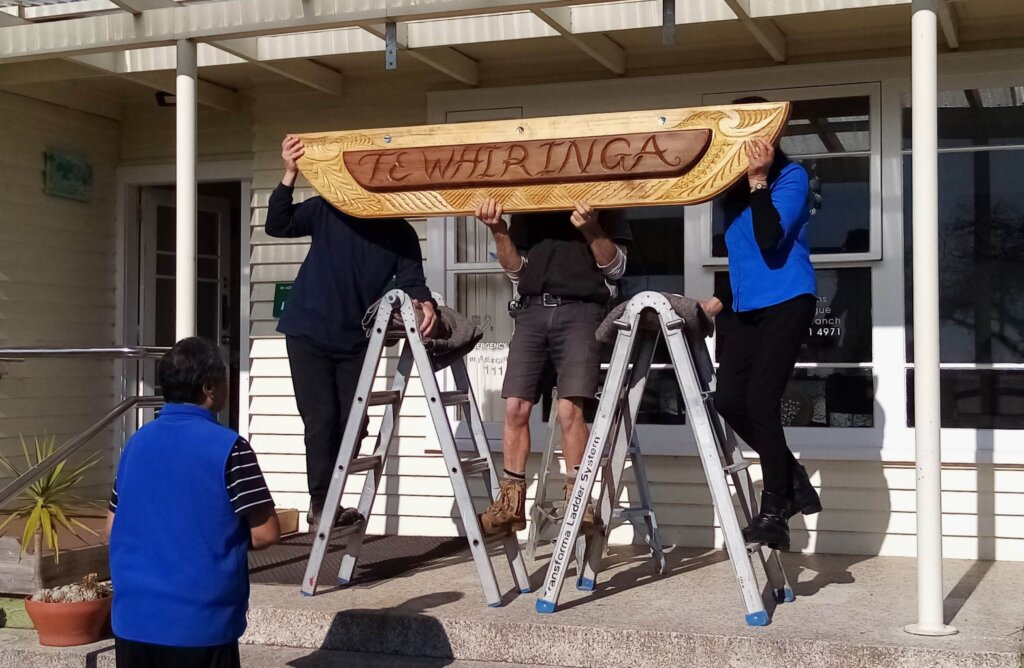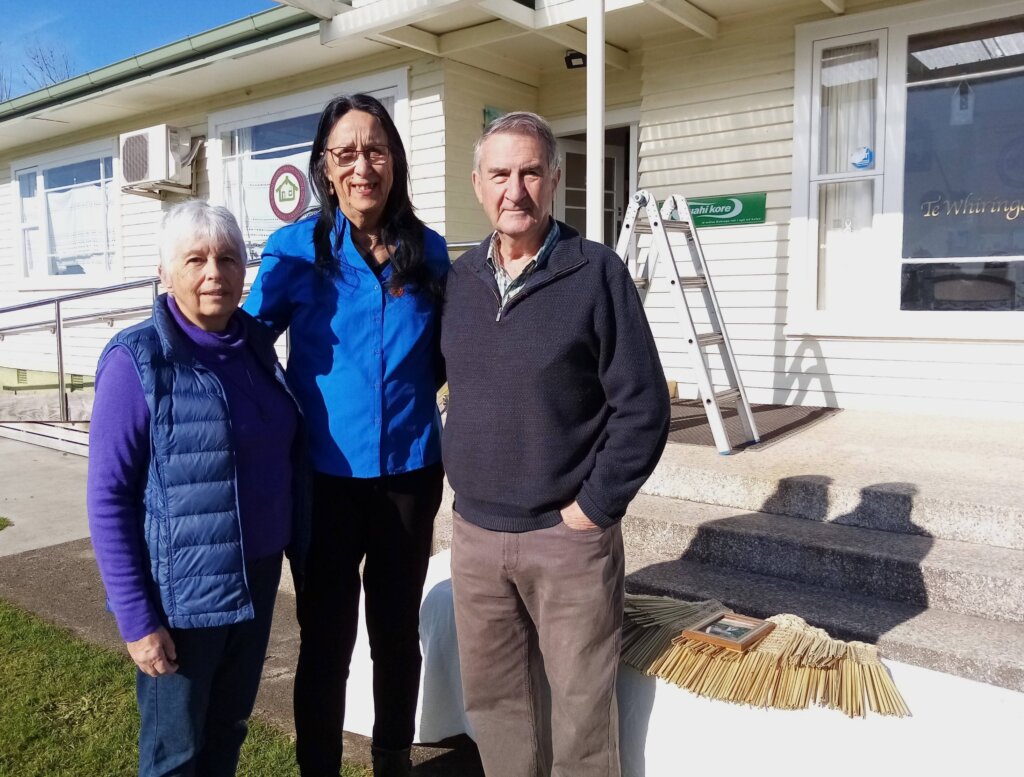
Lifting the lintel into place were Skip and Phillip McGough and Rosemary Murray, watched by Kane Rangitonga QSM.
The placement on Saturday of a waka-shaped carved lintel at the Kihikihi whare of the Te Awamutu Māori Women’s Welfare League (MWWL) marked the end of a long journey.
The lintel has the name Te Whiringa etched into a totara inlay, with the surrounding matai carrying other carvings of special significance to the whare. The carver did the work when he was part of Waikeria Prison’s Māori focus unit, Te Ao Mārama, and is someone strongly connected to the area.
MWWL president Rosemary Murray said the project began almost four years ago but had to be halted during the Covid-19 pandemic.
She thanked Mary-Ann and Ruary Laidlaw who donated the matai and were on site to see the final carving put in place, telling them, “Thank you for making our dream come true.”
The lintel represents the MWWL’s desire to ‘tell the stories that came before’, Rosemary said. “We wanted something that represented our whare, our women, our community, and we wanted it to differentiate us from the museum.”
MWWL vice president Rangi Paraha said it was important to reference the house’s history as part of an early pa and former police constable site. She said the carving would be a visual connection between the past and the future.
Te Whiringa was the name gifted to the whare by former MWWL president, the late Billie Crossley. She and another former president, the late Jean Green, were both honoured at Saturday’s ceremony. The name references a place where people can share tasks to benefit all and make decisions … a place for ‘the plaiting, weaving and exchanging of words’.
Blessing the lintel before it was fixed into place above the deck was Kainga Aroha Community House manager, Kane Rangitonga.
He told guests that the slabs of donated wood had been turned into a taonga. “This is not just a piece of wood… it is about representing the whare and its people.”
Helping fix the heavy lintel into place were Te Awamutu-based building brothers, Phillip and Skip McGough, who said they were delighted to be part of the project.

Te Awamutu Māori Women’s Welfare League president Rosemary Murray, centre, with the couple who donated some of the wood, Mary-Ann and Ruary Laidlaw.









